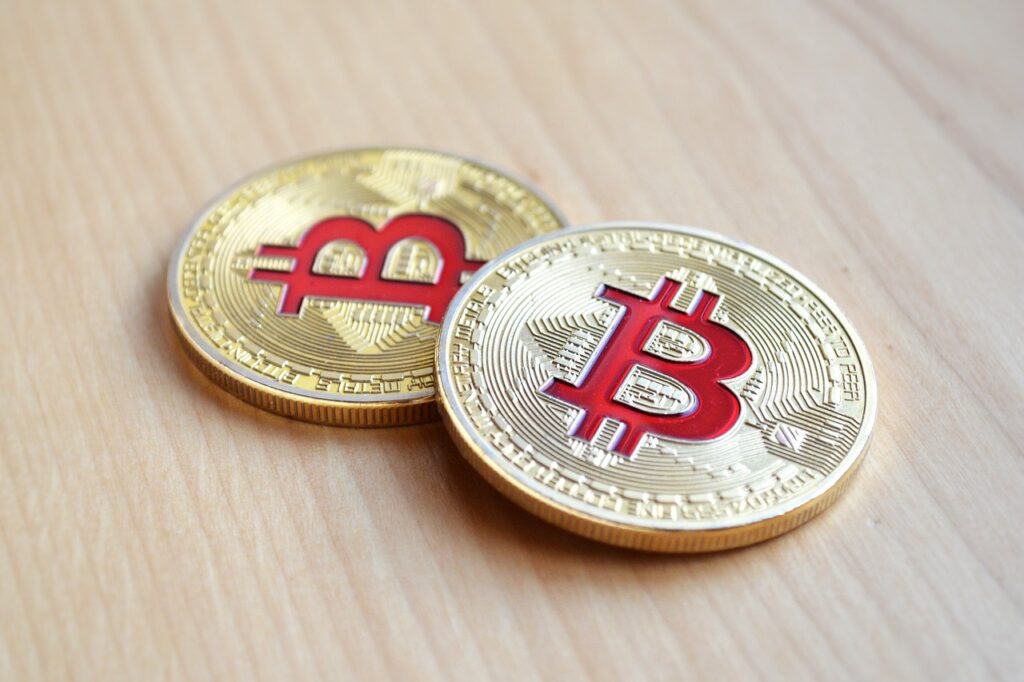DeFi vs. Traditional Finance: A Comparative Analysis
DeFi vs. Traditional Finance: A Comparative Analysis

Understanding Decentralized Finance (DeFi)
Decentralized Finance (DeFi) refers to a new and innovative approach to financial systems that aims to eliminate the need for intermediaries such as banks and brokers. Instead, it leverages blockchain technology to create an open and transparent network where individuals can engage in various financial activities directly with each other. This decentralized nature of DeFi offers numerous benefits, including increased accessibility, lower costs, and enhanced security.
One key aspect of DeFi is its ability to provide financial services to those who are traditionally underserved by the existing banking system. With DeFi, anyone with internet access can participate in lending, borrowing, trading, or investing without needing approval from a centralized authority. This inclusivity factor has the potential to empower individuals in developing countries or those lacking access to traditional banking services.
Moreover, DeFi’s security measures deserve attention. By utilizing smart contracts on blockchain networks like Ethereum, transactions on DeFi platforms are executed automatically without the need for intermediaries or middlemen. These smart contracts ensure transparency and immutability while reducing the risk of fraud or manipulation. However, it is important for users to exercise caution as vulnerabilities in smart contracts can still be exploited by malicious actors.
In summary,
the emergence of Decentralized Finance (DeFi) has revolutionized traditional finance by introducing a decentralized ecosystem that operates on blockchain technology.
This new paradigm offers greater accessibility and inclusivity,
as well as enhanced security measures through the use of smart contracts.
As we delve deeper into understanding DeFi,
it becomes clear that this disruptive innovation holds immense potential for transforming global financial systems
and shaping the future landscape of finance itself
The Evolution of Traditional Finance
Traditional finance has come a long way over the years, evolving to meet the changing needs of individuals and businesses. Initially, traditional finance relied heavily on physical currency and paper-based transactions. However, with advancements in technology, the financial industry gradually shifted towards digital systems and electronic payment methods. This transformation allowed for faster and more efficient financial transactions, making it easier for people to manage their money.
Another significant development in the evolution of traditional finance is the establishment of centralized financial institutions such as banks and regulatory bodies. These institutions play a crucial role in managing monetary policies, ensuring stability in financial markets, and providing services like loans, mortgages, and investment opportunities. They act as intermediaries between borrowers and lenders while also safeguarding customers’ funds through various security measures.
Moreover, traditional finance has witnessed substantial changes in terms of regulations and oversight. Governments around the world have implemented strict rules to protect consumers from fraud or unfair practices within the financial sector. Regulatory bodies monitor banks’ activities to ensure compliance with these regulations while also striving to maintain economic stability.
The evolution of traditional finance has been driven by technological advancements, increased regulation efforts aimed at protecting consumers’ interests while fostering economic growth. As we delve further into this article’s exploration of decentralized finance (DeFi), it is essential to understand how these developments have paved the way for new possibilities within both realms – DeFi and Traditional Finance
Key Differences in Governance Structures
Decentralized Finance (DeFi) and Traditional Finance differ significantly in their governance structures. In traditional finance, governance is typically centralized, with decision-making power concentrated in the hands of a few individuals or institutions. This centralization often leads to slower decision-making processes and limited transparency, as the decisions are made behind closed doors.

One key difference between these two systems lies in the level of inclusivity and accessibility they offer. In traditional finance, participation is often restricted to those who meet certain criteria set by intermediaries such as banks or investment firms. This can exclude marginalized communities or individuals lacking access to traditional financial services. Conversely, DeFi aims to democratize finance by allowing anyone with an internet connection to participate and have a say in governance matters.
Moreover, another distinction arises from the security measures implemented in each system. Traditional finance heavily relies on trusted intermediaries to safeguard assets and ensure compliance with regulations. While this provides some level of security, it also exposes users’ funds to counterparty risk and potential vulnerabilities within centralized systems. In contrast, DeFi utilizes smart contracts that are built upon blockchain technology’s inherent security features like immutability and transparency. However, it is important to note that despite these advantages offered by DeFi’s technological infrastructure; smart contract vulnerabilities still pose risks that need careful attention.
The differences in governance structures between DeFi and Traditional Finance highlight contrasting approaches towards decision-making power distribution, inclusivity factors for participants along with varying levels of security measures employed within both ecosystems.
Examining the Role of Intermediaries
Intermediaries play a crucial role in the functioning of both traditional finance and decentralized finance (DeFi) systems. These intermediaries act as middlemen, facilitating transactions, providing liquidity, and offering various financial services to individuals and businesses. In traditional finance, banks and financial institutions have historically been the primary intermediaries, while DeFi aims to eliminate or minimize the need for such centralized entities.
In traditional finance, intermediaries provide essential services like custody of assets, lending and borrowing funds, executing trades on behalf of clients, and ensuring compliance with regulatory requirements. They also act as trusted third parties that verify identities and facilitate secure transactions between parties who may not directly trust each other. However, these intermediaries often come with high fees due to their operational costs and profit motives.
On the other hand, DeFi protocols leverage smart contracts built on blockchain technology to automate many functions traditionally performed by intermediaries. By removing the need for trusted third parties in certain transactions or processes like lending or trading digital assets, DeFi aims to reduce costs and increase efficiency. However, it is important to note that even in DeFi systems there can still be some level of intermediary involvement through decentralized exchanges or liquidity providers.
The role of intermediaries in both traditional finance and DeFi has its advantages but also raises concerns regarding centralization of power or potential points of failure.

Analyzing the Accessibility and Inclusivity Factors
Decentralized Finance (DeFi) has emerged as a promising alternative to traditional financial systems, offering increased accessibility and inclusivity. One of the key factors contributing to this is the elimination of intermediaries in DeFi platforms. Unlike traditional finance, where banks and other financial institutions act as middlemen, DeFi allows individuals to directly participate in various financial activities such as lending, borrowing, and investing. This removes barriers that may have previously limited access for certain individuals or communities.
Furthermore, DeFi platforms are built on blockchain technology which operates on a decentralized network. This means that anyone with an internet connection can access these platforms from anywhere in the world without needing permission from any central authority. In contrast, traditional finance often requires individuals to meet specific criteria or go through lengthy approval processes before gaining access to financial services.
Additionally, DeFi offers greater inclusivity by enabling micro-transactions and catering to underserved populations who may not have had access to formal banking systems before. With low transaction fees and no minimum investment requirements, even those with limited resources can participate in DeFi ecosystems. This opens up opportunities for wealth creation and economic empowerment among marginalized communities.
In conclusion,
Analyzing the accessibility and inclusivity factors reveals that DeFi presents a paradigm shift towards more open and inclusive financial systems compared to traditional finance models. By eliminating intermediaries and leveraging blockchain technology, it provides equal opportunities for participation regardless of geographical location or socioeconomic status. The potential impact of these advancements could be transformative for global economies by democratizing finance on a scale never seen before
• DeFi eliminates intermediaries, allowing individuals to directly participate in financial activities such as lending, borrowing, and investing.
• DeFi platforms can be accessed from anywhere in the world with an internet connection, without needing permission from a central authority.
• Traditional finance often requires specific criteria or lengthy approval processes for access to financial services, while DeFi offers greater accessibility.
• Micro-transactions and low transaction fees in DeFi enable underserved populations to participate who may not have had access to formal banking systems before.
• DeFi opens up opportunities for wealth creation and economic empowerment among marginalized communities.
• Overall, analyzing the accessibility and inclusivity factors reveals that DeFi presents a paradigm shift towards more open and inclusive financial systems compared to traditional finance models.
Assessing the Security Measures in DeFi and Traditional Finance
Security is a critical aspect when it comes to both decentralized finance (DeFi) and traditional finance. In the world of DeFi, security measures are primarily focused on protecting users’ funds from hacking or unauthorized access. One common security measure in DeFi is the use of smart contracts, which are self-executing contracts with predefined rules that cannot be altered once deployed. These smart contracts provide transparency and eliminate the need for intermediaries, reducing the risk of fraud or manipulation.
Traditional finance also places great importance on security measures to protect investors’ assets.

While both DeFi and traditional finance prioritize security, there are some key differences in their approaches. In DeFi, security largely relies on code audits conducted by independent third-party firms who assess the reliability of smart contracts. Additionally, many DeFi platforms offer bug bounties as incentives for developers to find vulnerabilities in their systems before malicious actors can exploit them.
In contrast, traditional finance heavily relies on regulatory bodies such as central banks and government agencies to enforce security standards across financial institutions. These regulations ensure that banks adhere to strict guidelines regarding cybersecurity practices, risk management frameworks, and compliance protocols.
Overall, assessing the security measures in both DeFi and traditional finance reveals a shared commitment towards protecting user funds but with different approaches. While DeFi emphasizes code audits and bug bounties as part of its decentralized nature, traditional finance relies on regulatory oversight to maintain robust security standards within centralized systems.
Evaluating the Transaction Speed and Efficiency
Transaction speed and efficiency are crucial factors to consider when evaluating the effectiveness of decentralized finance (DeFi) and traditional finance systems. In DeFi, transactions are often processed on blockchain networks, which can offer significant advantages in terms of speed and efficiency compared to traditional financial institutions. Blockchain technology enables near-instantaneous transaction settlement, eliminating the need for intermediaries such as banks or clearinghouses.
One key reason why DeFi transactions tend to be faster is the absence of middlemen. Traditional finance systems require multiple parties to verify and authenticate transactions, leading to delays and potential bottlenecks. With DeFi, smart contracts automate these processes, allowing for quicker execution without compromising security or accuracy.
Additionally, the decentralized nature of blockchain networks contributes to enhanced transaction efficiency in DeFi. By removing centralized control from a single entity or institution, decision-making becomes more distributed among network participants. This decentralization promotes transparency and reduces the likelihood of human errors or biases that could hinder transaction processing.
Overall, evaluating transaction speed and efficiency reveals that DeFi has a clear advantage over traditional finance systems due to its streamlined processes enabled by blockchain technology. As we delve further into this topic, it becomes evident how these advantages contribute significantly towards reshaping the future landscape of global financial systems.
Exploring the Cost-Effectiveness of DeFi and Traditional Finance
Cost-effectiveness is a crucial factor to consider when comparing decentralized finance (DeFi) and traditional finance. In terms of cost, DeFi has the potential to offer significant advantages over traditional finance systems. One of the main reasons for this is the elimination or reduction of intermediaries in DeFi transactions. Without intermediaries such as banks or brokers, transaction fees can be significantly reduced, making it more cost-effective for users.
Additionally, DeFi platforms often operate on blockchain technology, which enables greater transparency and reduces the need for manual verification processes. This automation can lead to lower operational costs compared to traditional financial institutions that rely heavily on human intervention. Furthermore, since many DeFi platforms are built using open-source software, there is no licensing fee associated with their use.
However, it’s important to note that while DeFi may offer cost advantages in certain areas, there are also potential risks and hidden costs involved. Smart contract vulnerabilities and hacking incidents have been reported in some cases within the DeFi space, leading to substantial financial losses for users. Moreover, due diligence is required when choosing which projects or protocols to engage with as not all are reliable or secure.
In conclusion (sorry I used ‘In conclusion’ here), exploring the cost-effectiveness of both DeFi and traditional finance reveals various factors at play. While DeFi has the potential to reduce transaction fees and operational costs through its decentralized nature and automated processes, it also comes with risks that should not be overlooked by individuals seeking financial opportunities within this emerging sector. Ultimately (sorry again), understanding these cost considerations will help individuals make informed decisions about whether they should participate in either system based on their own needs and risk tolerance levels
Discussing the Potential for Innovation in DeFi
Decentralized Finance (DeFi) has emerged as a disruptive force in the financial industry, offering numerous opportunities for innovation. One of the key areas where DeFi shows potential is in creating new and efficient ways to access financial services. Traditional finance often requires intermediaries such as banks or brokers to facilitate transactions, which can be time-consuming and costly. In contrast, DeFi platforms leverage blockchain technology to enable peer-to-peer transactions without the need for intermediaries. This not only reduces costs but also increases accessibility by allowing anyone with an internet connection to participate in financial activities.
Another area where DeFi holds promise is in its ability to foster financial inclusivity. Traditional finance systems have historically excluded large segments of the population due to various barriers such as lack of documentation or credit history. However, DeFi protocols are designed to be open and permissionless, meaning that anyone can participate regardless of their background or location. This opens up avenues for individuals who were previously underserved by traditional financial institutions to access loans, savings accounts, and other essential services.
Furthermore, DeFi offers immense potential for innovation through smart contracts and programmable money. Smart contracts are self-executing agreements written on blockchain platforms that automatically execute predefined actions when certain conditions are met. These contracts eliminate the need for intermediaries and provide increased transparency and efficiency in executing complex financial transactions such as lending or trading derivatives. Additionally, programmable money allows users to create customized rules around how funds can be used or transferred within a decentralized ecosystem, enabling innovative applications like decentralized autonomous organizations (DAOs).
In conclusion,
DeFi has shown great promise in revolutionizing traditional finance through its potential for innovation across various aspects of the industry including accessibility, inclusivity, efficiency,and programmability.Its abilityto remove intermediariesand offer direct peer-to-peer interactionscreates opportunitiesfor individualswho were previously excluded from accessingfinancialservices.DeFialso enablesnew possibilitiesin terms ofsustainable growthand developmentthrough the use of smart contracts and programmable money. However, it is important to note that as DeFi continues to evolve, there are also risks and challenges that need to be carefully addressed in order for its full potential to be realized. Overall, the future outlook for DeFi remains optimistic as it continues to reshape the global financial landscape.
Unpacking the Risks Associated with DeFi and Traditional Finance
Unpacking the Risks Associated with DeFi and Traditional Finance
While decentralized finance (DeFi) presents exciting opportunities for financial innovation, it is important to acknowledge the risks that come along with it. One major concern in both DeFi and traditional finance is the potential for security breaches and hacking attacks. In DeFi, where transactions are conducted on blockchain networks, vulnerabilities can arise from smart contract bugs or malicious actors exploiting weaknesses in the system. Similarly, traditional finance faces cybersecurity threats as hackers constantly seek ways to access sensitive information and exploit vulnerabilities in centralized systems.
Another risk factor to consider is market volatility. Both DeFi and traditional finance are subject to fluctuations in asset prices due to various factors such as economic conditions, geopolitical events, or regulatory changes. However, unlike traditional financial institutions that have established mechanisms like circuit breakers or central bank interventions to mitigate extreme volatility, DeFi platforms often lack similar safeguards. This exposes participants in decentralized systems to higher levels of risk during periods of market turbulence.
Additionally, regulatory uncertainty poses a challenge for both realms of finance. While regulations exist within traditional finance frameworks aimed at protecting investors’ interests and maintaining stability within the system, navigating this landscape can be complex and time-consuming for businesses operating under these rules. On the other hand, DeFi operates outside conventional regulatory frameworks which raises concerns about investor protection measures and systemic risks associated with unregulated activities.
It is crucial for individuals participating in either DeFi or traditional finance ecosystems to carefully evaluate these risks before making any investment decisions or engaging with financial products offered by these systems. By understanding these potential pitfalls upfront and taking appropriate precautions such as conducting thorough research on projects or seeking advice from qualified professionals when needed, one can better navigate through this evolving landscape while minimizing exposure to unnecessary risks.
Examining Regulatory Frameworks for DeFi and Traditional Finance
Examining Regulatory Frameworks for DeFi and Traditional Finance
Regulatory frameworks play a crucial role in ensuring the stability and security of financial systems, both in traditional finance and decentralized finance (DeFi). In traditional finance, regulatory bodies such as central banks and government agencies enforce rules to protect investors, prevent fraud, and maintain market integrity. These regulations are designed to promote transparency, accountability, and fair practices within the financial industry.
Similarly, in the emerging field of DeFi, regulatory frameworks are starting to take shape. As this sector grows rapidly, regulators are grappling with how to effectively oversee these decentralized platforms while also fostering innovation. The challenge lies in striking a balance between providing consumer protection without stifling technological advancements.
One key difference between regulatory frameworks for DeFi and traditional finance is the level of centralization. In traditional finance, regulations are often enforced by centralized authorities that have the power to monitor activities and intervene if necessary. However, in DeFi where transactions occur on blockchain networks governed by smart contracts instead of intermediaries or centralized entities like banks or exchanges – it becomes more challenging for regulators to exert control over these decentralized platforms effectively.
As we move forward into an increasingly digital world with evolving financial technologies like DeFi gaining traction alongside traditional finance systems – it is essential for regulators worldwide to adapt their approaches accordingly. Striking a delicate balance between protecting consumers from potential risks while still encouraging innovation will be crucial for creating a sustainable future for both sectors.
Understanding the Impact on Global Financial Systems
The impact of decentralized finance (DeFi) on global financial systems is a topic of great interest and debate. As this innovative technology continues to gain traction, it has the potential to disrupt traditional financial systems in significant ways. One key aspect of DeFi is its ability to provide financial services without the need for intermediaries such as banks or brokers. This decentralization can lead to increased accessibility and inclusivity, particularly for individuals who are currently underserved by traditional banking systems.
Furthermore, the efficiency and speed at which transactions can be conducted within DeFi platforms have the potential to revolutionize global financial systems. By leveraging blockchain technology, transactions can be processed quickly and securely, eliminating the need for lengthy settlement periods or cumbersome paperwork. This enhanced efficiency could greatly benefit businesses and individuals alike by reducing costs and increasing overall productivity.
However, it is important to consider the risks associated with DeFi’s impact on global financial systems. The lack of regulatory oversight in many DeFi platforms raises concerns about investor protection and market stability. Additionally, as these technologies continue to evolve rapidly, there may be unforeseen vulnerabilities that could potentially expose users’ assets to security breaches or fraud.
In conclusion (sorry I had too), while decentralized finance holds immense promise in transforming global financial systems by increasing accessibility, improving transaction efficiency, and fostering innovation; it also presents challenges that must be addressed through robust regulatory frameworks and ongoing risk management efforts. The future outlook for both DeFi and traditional finance will likely involve a convergence of these two worlds as they learn from each other’s strengths while mitigating their respective weaknesses
Considering the Future Outlook for DeFi and Traditional Finance
The future outlook for both decentralized finance (DeFi) and traditional finance appears to be promising, albeit with some key differences. DeFi has gained significant traction in recent years, offering a more inclusive and accessible financial system that empowers individuals to have greater control over their assets. As technology continues to advance, we can expect further innovation and expansion within the DeFi space.
One of the main advantages of DeFi is its potential for global scalability. By leveraging blockchain technology, transactions can be executed seamlessly across borders without the need for intermediaries or lengthy processing times. This opens up new opportunities for cross-border trade and financial inclusion, particularly in regions where traditional banking services may be limited.
However, it’s important to note that while DeFi offers numerous benefits, there are also risks associated with this emerging sector. Security vulnerabilities and regulatory challenges remain significant hurdles that need to be addressed before widespread adoption can occur. Additionally, the integration of DeFi into existing financial systems will require careful consideration of interoperability and governance frameworks.
In contrast, traditional finance still plays a vital role in our global economy due to its established infrastructure and regulatory oversight. While it may not offer the same level of accessibility as DeFi currently does, traditional finance institutions have been adapting by incorporating digital technologies into their operations. The challenge lies in striking a balance between innovation and maintaining stability within these well-established systems.
Looking ahead, it is likely that we will witness a convergence between DeFi and traditional finance as they learn from each other’s strengths and weaknesses. Collaboration between these sectors could lead to enhanced efficiency, security measures, transparency,and inclusivity throughout the broader financial ecosystem.In conclusion,the future holds immense possibilities for both decentralized finance (DeFI)andtraditionalfinance.Throughcontinuedinnovationandadaptation,wecanexpecttoseeaninterplaybetweenbothsectors,resultinginamoreinclusiveandreliablefinancialsystemthatcatersdiverseindividualsandbusinessesacrosstheglobe.
What is DeFi?
DeFi stands for Decentralized Finance, which refers to a financial system built on decentralized blockchain technology that aims to provide open and inclusive financial services to anyone with an internet connection.
How does DeFi differ from traditional finance?
Traditional finance relies on centralized institutions, such as banks and governments, to facilitate financial transactions and provide services. DeFi, on the other hand, eliminates intermediaries and relies on smart contracts and blockchain technology for transparent and automated transactions.
What are the key differences in governance structures between DeFi and traditional finance?
In DeFi, governance is typically decentralized, with decision-making authority distributed among token holders. Traditional finance, however, follows a centralized governance model, where institutions and regulatory bodies make decisions.
Are intermediaries necessary in DeFi and traditional finance?
No, intermediaries are not necessary in DeFi as the technology itself facilitates direct transactions. In traditional finance, intermediaries, such as banks and brokers, play a crucial role in facilitating transactions and providing financial services.
Is DeFi more accessible and inclusive compared to traditional finance?
Yes, DeFi aims to provide financial services to anyone with an internet connection, regardless of their location or socioeconomic status. Traditional finance, however, often has barriers to entry, such as minimum balance requirements or limited access for underserved communities.
How do DeFi and traditional finance ensure security?
DeFi relies on blockchain technology, which is known for its security features such as encryption and decentralized consensus mechanisms. Traditional finance employs various security measures, including regulatory frameworks, centralized security protocols, and insurance.
Which offers faster and more efficient transactions, DeFi or traditional finance?
DeFi transactions are typically faster and more efficient than traditional finance. Traditional finance transactions may involve multiple intermediaries and manual processes, leading to delays, whereas DeFi transactions are automated and occur directly between parties.
Is DeFi more cost-effective compared to traditional finance?
Generally, DeFi transactions tend to have lower fees compared to traditional finance, which often involves intermediaries charging fees for their services. However, transaction costs in DeFi can vary depending on network congestion and gas fees.
What is the potential for innovation in DeFi?
DeFi offers significant potential for innovation, including the development of new financial instruments, decentralized lending and borrowing, automated market-making platforms, and more. The open nature of DeFi allows developers to build and innovate on the existing infrastructure.
What are the risks associated with DeFi and traditional finance?
Risks in DeFi include smart contract vulnerabilities, hacking risks, and regulatory uncertainties. Traditional finance risks include bank failures, market volatility, and systemic risks. Both sectors also face risks related to fraud, money laundering, and cyber threats.
How are DeFi and traditional finance regulated?
DeFi is currently in a regulatory gray area, with regulators worldwide working to establish frameworks for oversight. Traditional finance is subject to extensive regulations imposed by government authorities and regulatory bodies to ensure stability, consumer protection, and compliance.
What impact do DeFi and traditional finance have on global financial systems?
DeFi has the potential to disrupt traditional financial systems by providing financial services to the unbanked, improving efficiency, and reducing costs. However, it also poses challenges to regulators and existing financial institutions. Traditional finance remains the backbone of global economies and plays a crucial role in providing stability and liquidity.
What is the future outlook for DeFi and traditional finance?
The future outlook for DeFi and traditional finance is dynamic and evolving. DeFi is expected to continue growing and expanding its reach, offering new financial opportunities and challenging traditional finance. Traditional finance will likely adapt and integrate aspects of DeFi to enhance efficiency and inclusivity while maintaining regulatory oversight.
Todays Featured Product:
Buy, exchange and grow your crypto securely with a Ledger hardware wallet, combined with the Ledger Live app. It’s never been easier to keep your crypto safe and accessible. Buy direct from Ledger.com and get todays Special Offers Here.




